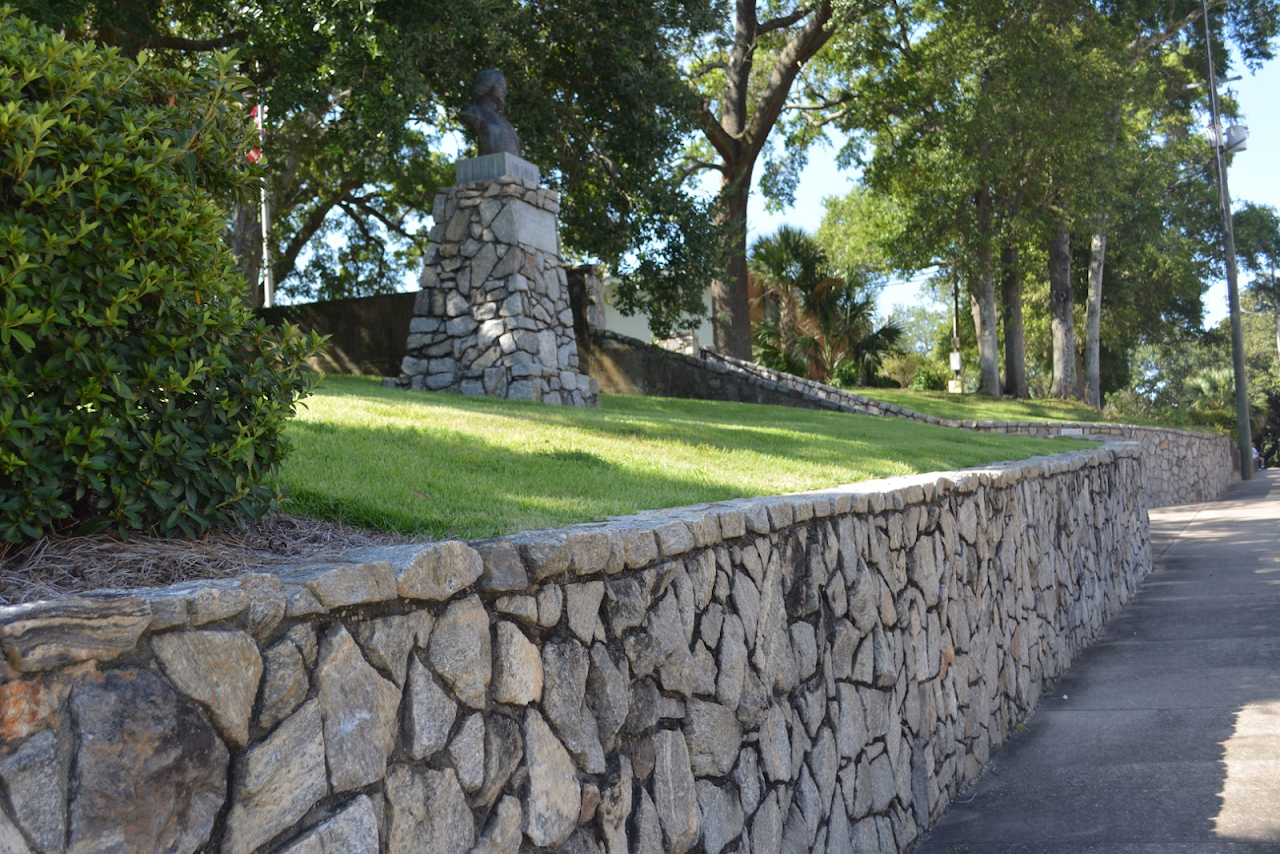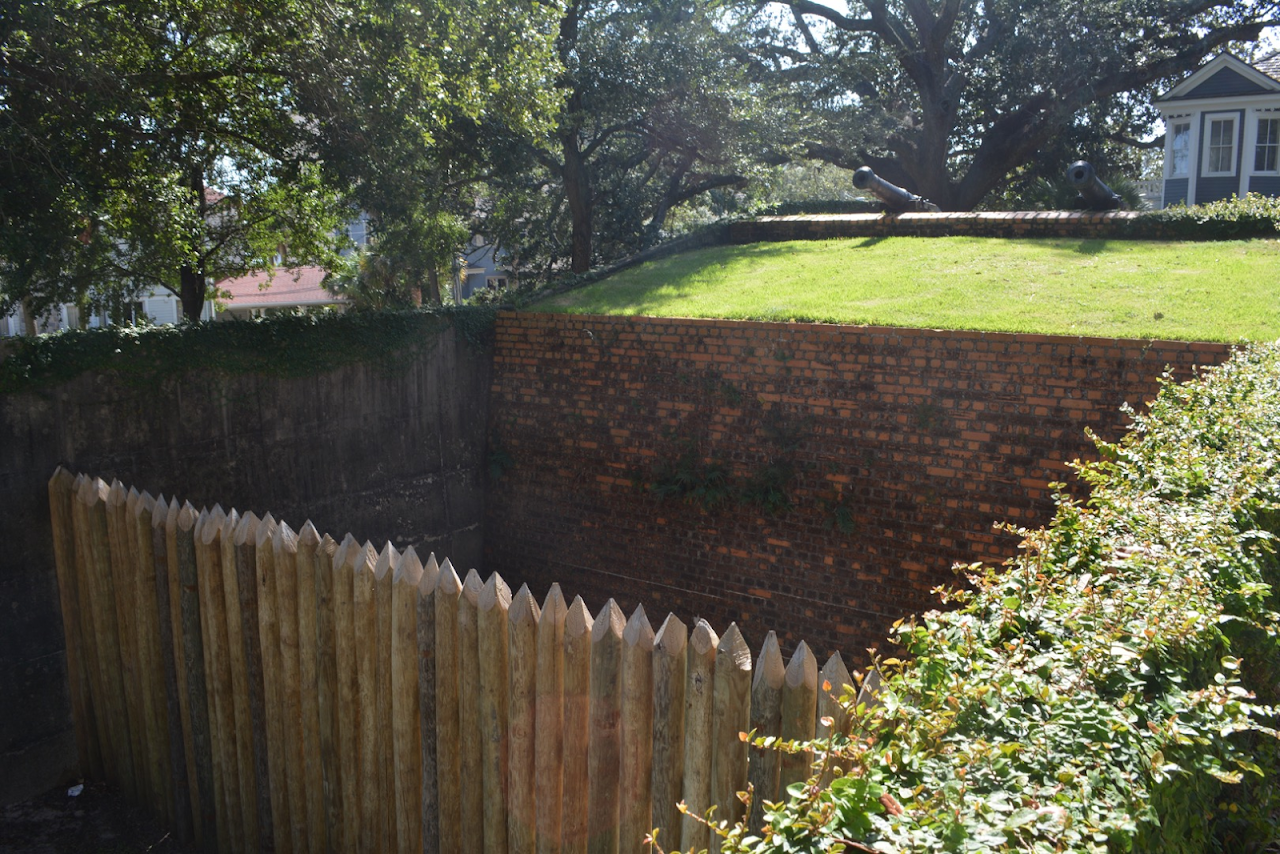

It was here in 1781 that the Spanish army under General Bernardo de Galvez defeated the English at Fort George, helping to turn the tide of American Revolution. Originally under the control of the British, General John Campbell ordered Ft. George to be constructed for fear of a Spanish invasion. It was flanked by two smaller fortifications, the Queen’s Redoubt and the Prince of Wales Redoubt (current day 1125 N. Spring Street and 904 N. Baylen Street, respectively), which are no longer intact. The Spanish siege ended with the surrender of Campbell after a Spanish shell hit the Queen’s Redoubt on May 8, leaving Ft. George indefensible. The battle site, at the crest of a hill rising from the waterfront settlement, is now distinguished as the Fort George Memorial Park. Ft. George was built as a Vauban-type fortress, a style defined by its resemblance to a star fort, with horn work extending down the hill for access to a water supply. A section of the Fort reconstructed on its original foundation marks the historic spot which lies within the present boundaries of the North Hill Preservation District.
The stone bust of Bernardo de Galvez was donated by Spain on the 200th anniversary of the Battle of Pensacola.




